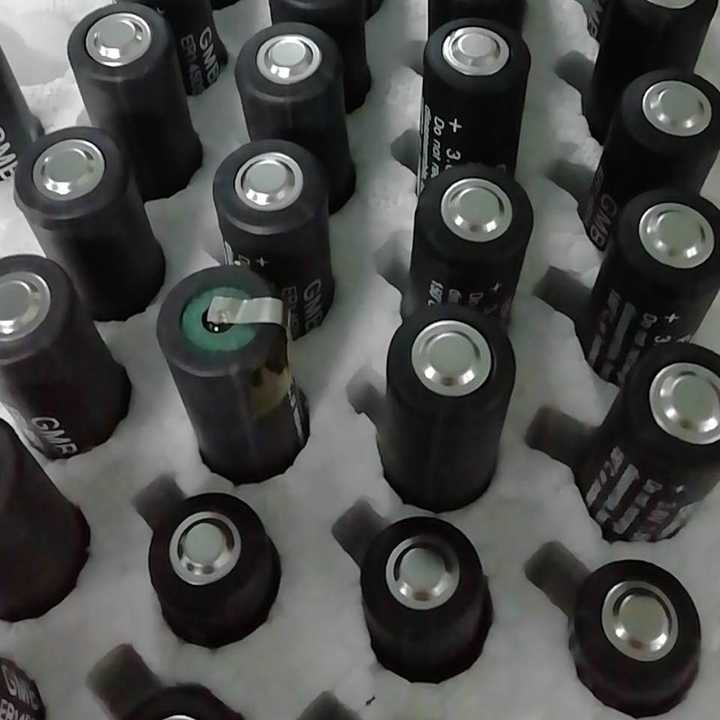High-Temperature Battery Technology: ER14505S and Beyond
High-Temperature Battery Technology: ER14505S and Beyond

In the realm of battery technology, the quest for improved performance under extreme conditions has always been a key focus. High-temperature batteries, specifically designed to operate efficiently in elevated temperatures, have become increasingly significant in various applications ranging from aerospace to industrial equipment. Among these, the ER14505S battery stands out as a reliable solution for high-temperature environments. This article delves into the intricacies of high-temperature battery technology, focusing on the ER14505S LiSOCL2 battery and other advancements in this field.
Introduction to High-Temperature Battery Technology
High-temperature batteries are specialized electrochemical cells that can maintain their performance and safety even when exposed to temperatures exceeding the normal operating range of conventional batteries. These batteries are typically designed with materials and chemistries that are thermally stable and resistant to degradation at high temperatures. The demand for such batteries has grown significantly in recent years, driven by the need for reliable power sources in harsh environments.
The ER14505S Battery: A Case Study
The ER14505S battery is a prime example of a high-temperature battery that has been engineered to meet the demands of specific applications. This battery is often used in scenarios where traditional batteries would fail due to excessive heat. Its design incorporates thermally stable materials and advanced chemistries that allow it to operate efficiently at temperatures far above the norm.
The key to the ER14505S's performance lies in its internal chemistry and material composition. The electrolyte, for instance, is formulated to maintain its conductivity and stability at high temperatures. Similarly, the anode and cathode materials are chosen for their ability to withstand thermal stress without degrading. These materials, combined with the battery's robust construction, enable the ER14505S to deliver consistent power output even in extreme conditions.
Applications of High-Temperature Batteries
The applications for high-temperature batteries are diverse and span across multiple industries. In aerospace, for instance, satellites and spacecraft often operate in environments where temperatures can exceed 100°C. High-temperature batteries are essential in providing reliable power to these systems, ensuring their continued operation in the harsh conditions of space.
Industrial equipment also relies heavily on high-temperature batteries. Equipment such as oil and gas drilling machinery, furnaces, and high-temperature ovens often require a power source that can withstand the extreme temperatures generated during operation. High-temperature batteries provide a safe and reliable solution for these applications.
In addition, the automotive industry is also exploring the use of high-temperature batteries for electric vehicles (EVs). EVs that operate in hot climates or are used for high-performance applications, such as racing, could benefit from batteries that can maintain their performance at elevated temperatures.
Challenges and Advancements in High-Temperature Battery Technology
Despite their many advantages, high-temperature batteries face several challenges that limit their widespread adoption. One major challenge is the need for specialized materials and chemistries that can maintain their performance at high temperatures. These materials are often expensive and difficult to source, increasing the overall cost of the batteries.
Another challenge is the need to ensure the safety of the batteries under extreme conditions. High temperatures can accelerate chemical reactions within the battery, potentially leading to thermal runaway and fire. Therefore, rigorous safety testing and certification are crucial for high-temperature batteries to gain widespread acceptance.
However, recent advancements in battery technology have begun to address these challenges. Researchers are exploring new materials and chemistries that are more thermally stable and cost-effective. In addition, advancements in battery management systems (BMS) have improved the safety and reliability of high-temperature batteries. BMS systems can monitor the battery's temperature, voltage, and current to ensure that it operates within safe limits.
Future Prospects for High-Temperature Battery Technology
Looking ahead, the future prospects for high-temperature battery technology are promising. With the increasing demand for reliable power sources in harsh environments, there is a growing need for batteries that can operate efficiently at high temperatures. This trend is likely to drive further research and development in this field, leading to the development of new materials, chemistries, and battery designs that can meet the challenges of high-temperature operation.
In addition, the automotive industry's shift towards EVs is also expected to spur innovation in high-temperature battery technology. As EVs become more prevalent in hot climates and high-performance applications, the demand for batteries that can maintain their performance at elevated temperatures will increase. This will create new opportunities for manufacturers of high-temperature batteries to develop new products and expand their market share.
Conclusion
In conclusion, high-temperature battery technology is a crucial area of research and development that has the potential to revolutionize a wide range of applications.





